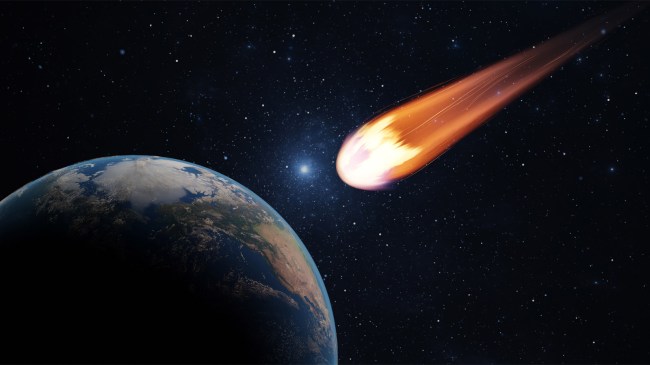iStockphoto
Heads up! An asteroid the size of a skyscraper will blast past Earth at approximately 20,000 miles per hour on Tuesday Sept. 17.
According to NASA, the asteroid, named 2024 ON, is between 721 and 1,575 feet in diameter.
Asteroid 2024 ON has been labeled as “potentially hazardous” by NASA. NASA defines asteroids as being potentially hazardous based on parameters that measure the asteroid’s potential to make threatening close approaches to the Earth.
“Specifically, all asteroids with an Earth Minimum Orbit Intersection Distance (MOID) of 0.05 au or less and an absolute magnitude (H) of 22.0 or less are considered PHA [potentially hazardous asteroids]s,” NASA explains on their website.
In other words, it has to be more than 492 feet and approach Earth within a 4.6 million mile radius.
All space rocks whose orbit put it within 1.3 astronomical units (AU) of the sun are classified as Near Earth Objects (NEO) by NASA. An AU is the average distance between Earth and the Sun, or about 93 million miles.
2024 ON qualifies because it will pass by Earth at a distance of around 620,000 miles, or about 2.6 times the distance between the Earth and the moon.
While this may not sound close, a NASA diagram of the space rock’s orbit when compared the Earth’s orbit shows just how close that really is.
As is always the case, NASA says 2024 ON will not make any contact with Earth.
Then again, in July, a giant asteroid flying by at 21,000 miles per hour was knocked off course by Earth’s gravity, so never say never.
There is also the problem of around 28,000 other asteroids NASA is currently tracking with their Asteroid Terrestrial-impact Last Alert System (ATLAS).
Even with that system in place, just last week an asteroid exploded in Earth’s atmosphere just eight hours after it was first spotted.
Should 2024 ON pass by Earth safely, we still will have to keep an eye on “lost” Asteroid 2007 FT3, which will reportedly have about a 11 million to 1 chance of hitting Earth with the force of 2.6 billion tons of TNT on Oct. 5, 2024.


